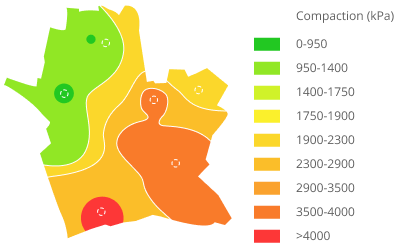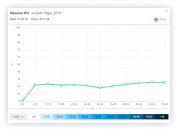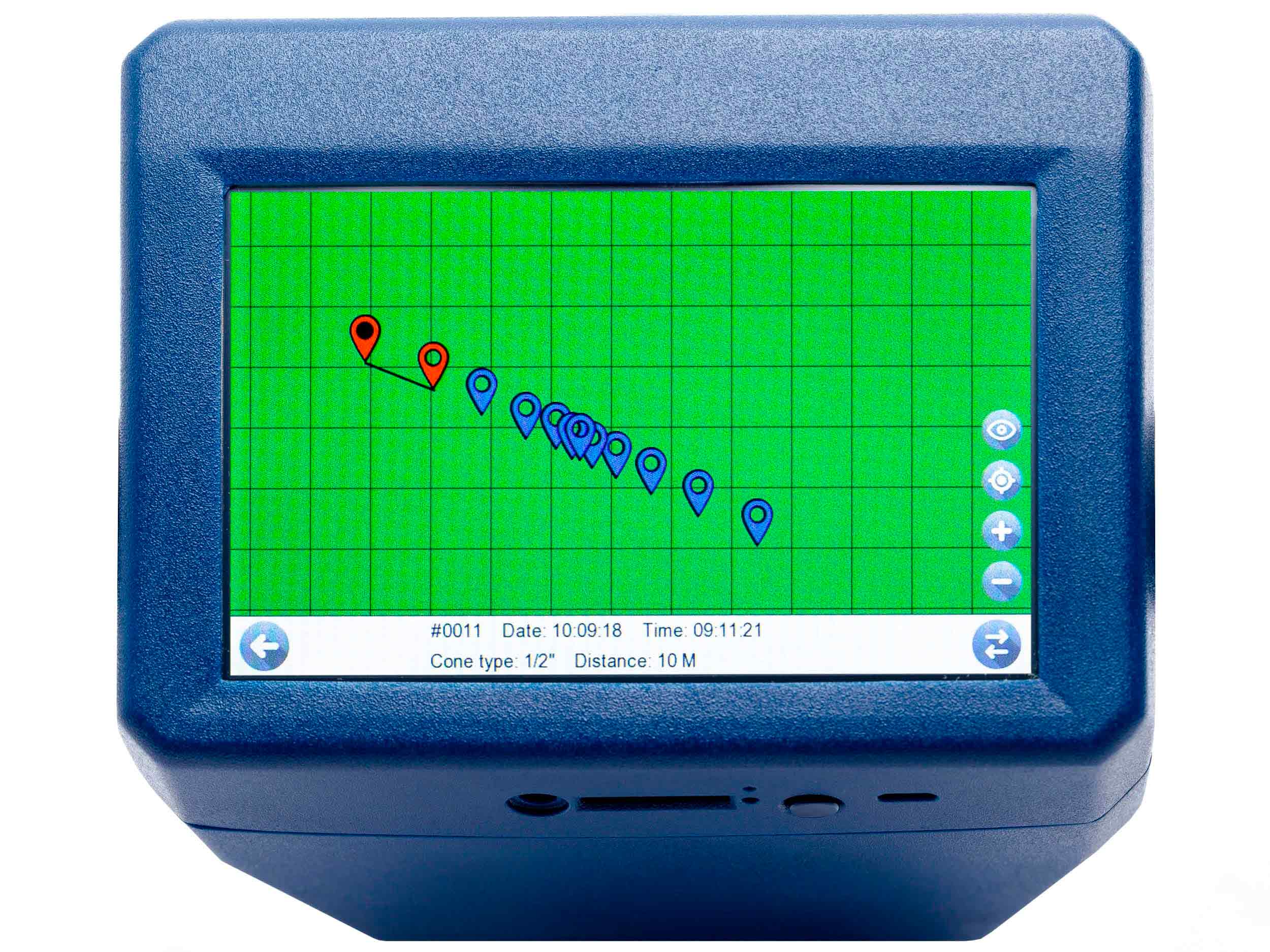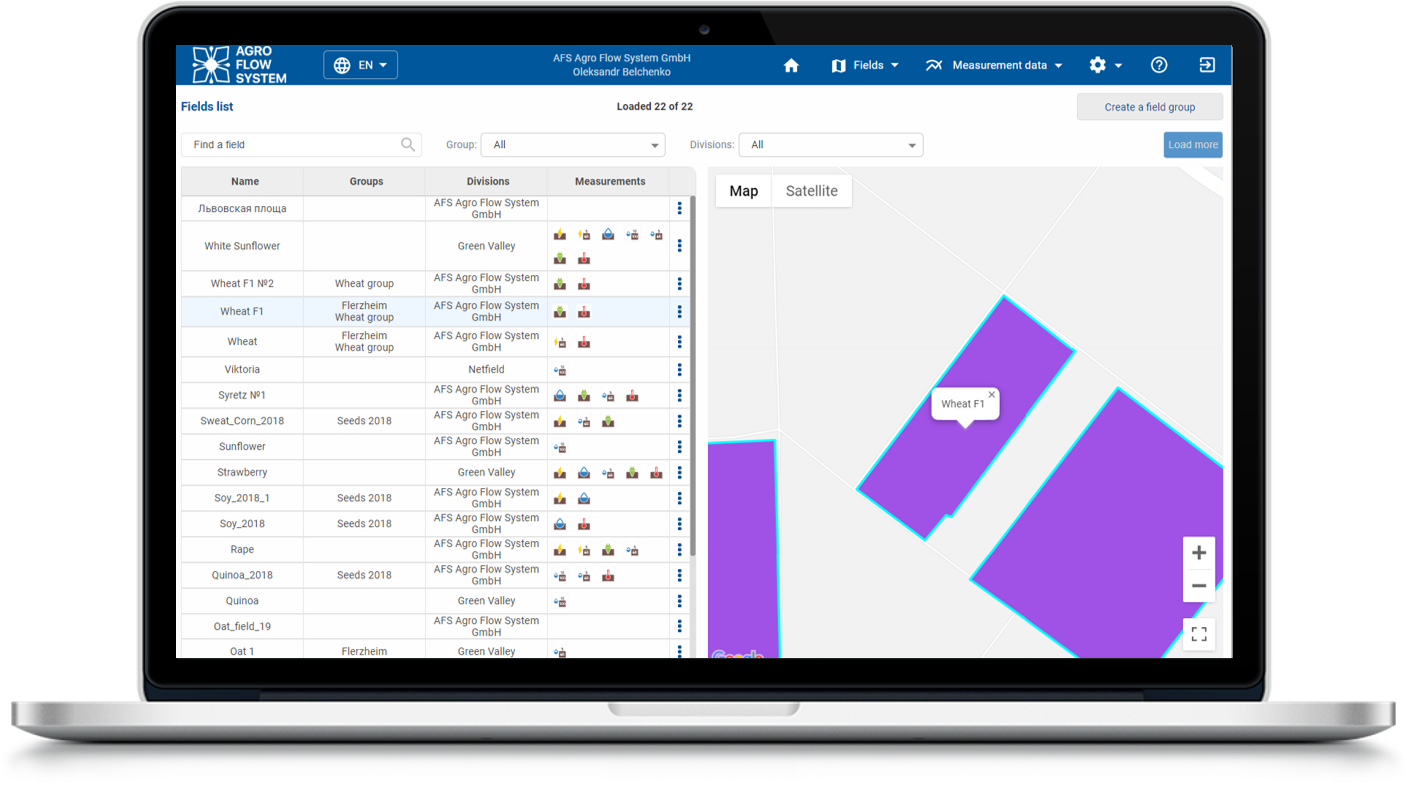

Stan, skład i właściwości fizyczne gleby są ważne dla optymalnego wzrostu roślin i dobrych plonów, ponieważ gleba jest głównym źródłem pożywienia dla upraw.
Wilgotność gleby
Nadmiar wilgoci w glebie negatywnie wpływa na rośliny, ponieważ z gleby wypiera się tlen, gromadzi się dwutlenek węgla, co prowadzi do ucisku i śmierci systemu korzeniowego, a także do wystąpienia różnych chorób u roślin. Przy niedostatecznej wilgotności rośliny doświadczają nadmiernego stresu wodnego, a także mają zmianę aktywności fizjologicznej. Komórki i tkanki tracą turgor, następuje głębokie więdnięcie, co prowadzi do niskiej produktywności i możliwej śmierci roślin.

Zagęszczenie gleby
Zagęszczenie gleby uniemożliwia prawidłowy rozwój systemu korzeniowego roślin, ogranicza kiełkowanie nasion, utrudnia napowietrzanie w okresach dużej wilgotności oraz pociąga za sobą dodatkowe koszty związane z uprawą gleby.

Zasolenie gleby (EC)
Zasolenie (gromadzenie się soli w glebie) ogranicza wzrost roślin, powodując zmniejszenie dostępności wody. Na glebach zasolonych wrażliwe uprawy dają słabe plony, a w niektórych przypadkach straty plonów mogą sięgać nawet 100%.

Soil Research Logger
Soil Research Logger składa się z urządzenia DS Logger 500 i czujnika DSM 600. DS Logger 500 to wielofunkcyjne urządzenie do pomiaru zagęszczenia gleby, temperatury i wilgotności powietrza. Wraz z czujnikiem DSM 600 mierzy temperaturę gleby, wilgotność gleby i przewodność gleby (EC).

Pomiary






Charakterystyka techniczna
Korzystaj z narzędzia do badania gleby przez cały sezon wegetacyjny, aby podejmować prawidłowe i terminowe decyzje dotyczące upraw.

VWC Soil temperature - °C
Electrical conductivity - μS/cm
Soil temperature - from +5˚С to +40˚С
Electrical conductivity - from 0 to 7000 μS/cm
Soil temperature - ±1˚С
Electrical conductivity - ±5%




Poprawność danych zapewniają również czujniki zbliżeniowe, które monitorują każdy milimetr pomiaru. W tym inteligentnym urządzeniu znajduje się ponad 20 różnych czujników, a to dopiero pierwszy krok w kierunku uzyskania zestawów danych w rolnictwie!

Wyjdź w pole i wykonaj niezbędne pomiary gęstości gleby, wilgotności gleby, temperatury gleby i przewodnictwa.


Monitoruj dane pomiarowe na dwa sposoby - na samym urządzeniu oraz na platformie internetowej. Wybierz to, co najbardziej Ci odpowiada!
Wszystkie pomiary wyświetlane są w czasie rzeczywistym na wyświetlaczu urządzenia. Przyjazny wielojęzyczny interfejs (angielski, niemiecki, włoski i francuski). Przeglądaj dane pomiarowe w arkuszach kalkulacyjnych, wykresach i punktach pomiarowych na mapie w dowolnym momencie.
Wszystkie dane dostępne są na platformie internetowej - Konto Osobiste AFS. Dane są automatycznie przesyłane za pośrednictwem karty SIM. Jeśli połączenie GSM nie jest możliwe, możesz pobrać dane do komputera za pomocą kabla USB i przesłać do chmury za pomocą oprogramowania AFS.
Konto osobiste AFS Najlepsze doświadczenie z korzystania z urządzeń AFS AGRO FLOW SYSTEM GmbH można uzyskać korzystając z platformy internetowej dostosowanej do wszystkich funkcji produktów firmy. Przeglądaj wszystkie dane na koncie osobistym AFS w postaci tabel, wykresów, map interpolacyjnych.
Utwórz własne pola, ustawiając granice pól na mapie lub przesyłając plik z już określonymi polami

Przeglądaj dane pomiarowe dla każdego pola, grupy pól lub określonego urządzenia, przedstawione w tabelach, wykresach i mapach.


Zarządzaj polami i grupuj je, zarządzaj swoimi pracownikami i urządzeniami

Ustaw zadania do wykonania dowolnego z dostępnych typów pomiarów w DS Logger 500 ze wskazaniem kontrahenta, współrzędnych i czasu pomiarów.

Firma AFS AGRO FLOW SYSTEM GmbH została założona w 2017 roku i posiada bogate doświadczenie w dziedzinie sprzętu pomiarowego dla rolnictwa precyzyjnego, a także integracji cyfrowych rozwiązań do analizy gleby. Od momentu powstania firma spełnia wszystkie wymagania rynku europejskiego i szybko zajmuje pozycję jednego z liderów w produkcji sprzętu dla światowego sektora rolniczego.
Oferujemy zaawansowane rozwiązania do badań terenowych gruntów, będąc idealnym partnerem dla wszystkich pracujących w kompleksie rolno-przemysłowym, producentów sprzętu do nawadniania, przedstawicieli firm z zakresu projektowania krajobrazu, budownictwa drogowego i innych branż pokrewnych.
Głównymi klientami firmy są gospodarstwa rolno-przemysłowe, gospodarstwa rolne, laboratoria badawcze różnych szczebli, dystrybutorzy maszyn rolniczych, firmy drogowe.
 Certyfikat UE
Certyfikat UE











